Dungeness crab is a prized seafood delicacy harvested off the Pacific Northwest coast. With its sweet, succulent meat and signature flavor, Dungeness crab is a special treat. However, cooking these large crustaceans can seem intimidating for home cooks. Follow this guide to become a pro at selecting, preparing, and cooking Dungeness crab in your own kitchen.
Before cooking, it helps to understand what makes Dungeness crab unique:
-
Found off the western coast of the U.S and Canada. Peak season is winter.
-
Named after a fishing village in Washington state.
-
Has a brownish-purple shell and claws tipped in white, 10 inches wide is average size
-
Sweet, tender meat preferred for its signature taste over other crab varieties
-
Delicious simply steamed and dipped in melted butter. Also great in pastas, risottos, salads, and more.
-
Sold live or pre-cooked. Live crabs should be active and heavy for their size.
Now let’s get cooking!
Step 1: Cleaning the Live Crab
For best flavor and texture, start by cooking a live crab:
-
Place the live crab in the freezer for 30 minutes prior to cleaning. This makes them docile for safer handling.
-
Once chilled, firmly grasp the main body shell from behind to avoid getting pinched by the claws.
-
Turn crab upside down. Use sturdy kitchen shears to cut off the triangular flap on the underside, commonly called the apron. Discard.
-
Lift and separate the top shell. Scoop out and discard the gills, stomach sac, and intestinal tract. Rinse.
-
Crack off the mouthparts and pinchers. Leave legs and claws intact.
-
Rinse again. The crab is now ready to cook.
Step 2: Choosing a Cooking Method
There are several excellent options for cooking Dungeness crab:
Steaming
-
Most traditional method to highlight the natural flavor.
-
Fill a large pot with 2 inches of water. Insert a steaming basket and bring water to a boil.
-
Place cleaned crab in basket, cover, and steam for 18-20 minutes until the shell turns bright orange.
Boiling
-
Boil enough salted water to submerge the crab by 2 inches.
-
Gently lower crab in and boil 12-15 minutes until shells redden. Drain.
Baking
-
Preheat oven to 375°F. Place crab on a baking sheet.
-
Bake 20 minutes until shell color changes. Tent with foil to prevent overcooking.
Grilling
-
An outdoor method that adds smoky depth.
-
Grill cleaned crab shell-side down over direct medium heat 8-10 minutes per side.
Step 3: Serving and Eating the Crab
Once cooked, it’s time to crack and feast:
-
Use a mallet or scissors to crack the shell. Remove top shell.
-
Pull away the triangular flap on the underside to access the meat.
-
Remove meat from body and legs. Discard viscera and gills.
-
Use crab crackers on legs and claws to extract the tender meat morsels inside.
-
Serve immediately with melted butter, lemon wedges, and crusty bread for dipping.
Handling Leftover Crab
For remaining fresh crab:
-
Refrigerate in an airtight container up to 2 days.
-
Use in salads, sandwiches, casseroles, pasta dishes, and stir-fries.
-
Transfer meat from shells to freezer bags and freeze up to 3 months.
-
Don’t freeze in the shell or refreeze thawed meat.
Helpful Tips and Tricks
Keep these additional pointers in mind:
-
One 11⁄2 pound crab yields about 1 cup of meat.
-
Have extra crabs on hand since yield can vary.
-
Cook and clean multiple crabs at once for efficiency.
-
Add herbs and garlic to the steaming liquid for flavor.
-
Chill quickly after cooking to prevent overcooking.
-
Serve with lemon, clarified butter, aioli or savory dipping sauces.
-
Crack legs, knuckles and claws to access the best meat morsels.
-
Don’t discard the tomalley (liver); it adds great richness and crab flavor when added to dishes.
With this handy guide, you’ll be impressing guests with your Dungeness crab cooking skills in no time. Just remember the three C’s – Cleaning, Cooking, and Cracking – and you’ll master this succulent seafood in your own kitchen.
Frequently Asked Questions
Here are answers to some common Dungeness crab questions:
Where can I buy live Dungeness crab?
Check local fish markets or seafood stores, especially in the Pacific Northwest. Some grocers may carry them seasonally.
Is pre-cooked crab meat as good?
Pre-cooked crab meat lacks the signature fresh flavor but is more convenient. Use within 2 days.
Can I re-freeze thawed crab meat?
It’s unsafe to refreeze thawed crab. Refrigerate up to 2 days or cook immediately instead.
Why are the shells so hard to crack?
Dungeness shells are extra thick and strong, needing mallets, crackers, and scissors to break through.
Is it ok to eat female crabs?
Yes, male and female Dungeness crabs have similarly great flavor and texture.
How do I make crab cakes or crab dip?
Use fresh cooked crab meat, combine with binders like breadcrumbs or mayo, season, and bake or broil into cakes or serve chilled as a dip.
What wines pair well with Dungeness crab?
Dry white wines like Chablis, Sauvignon Blanc, Pinot Grigio, and Champagne are excellent pairings.
With the expert tips in this guide, you can become a pro at selecting, preparing, cooking, and serving incredible Dungeness crab feasts at home. Impress your guests with your skills and knowledge. The sweet, succulent meat of Dungeness crab is a true Pacific Northwest treasure meant to be enjoyed.
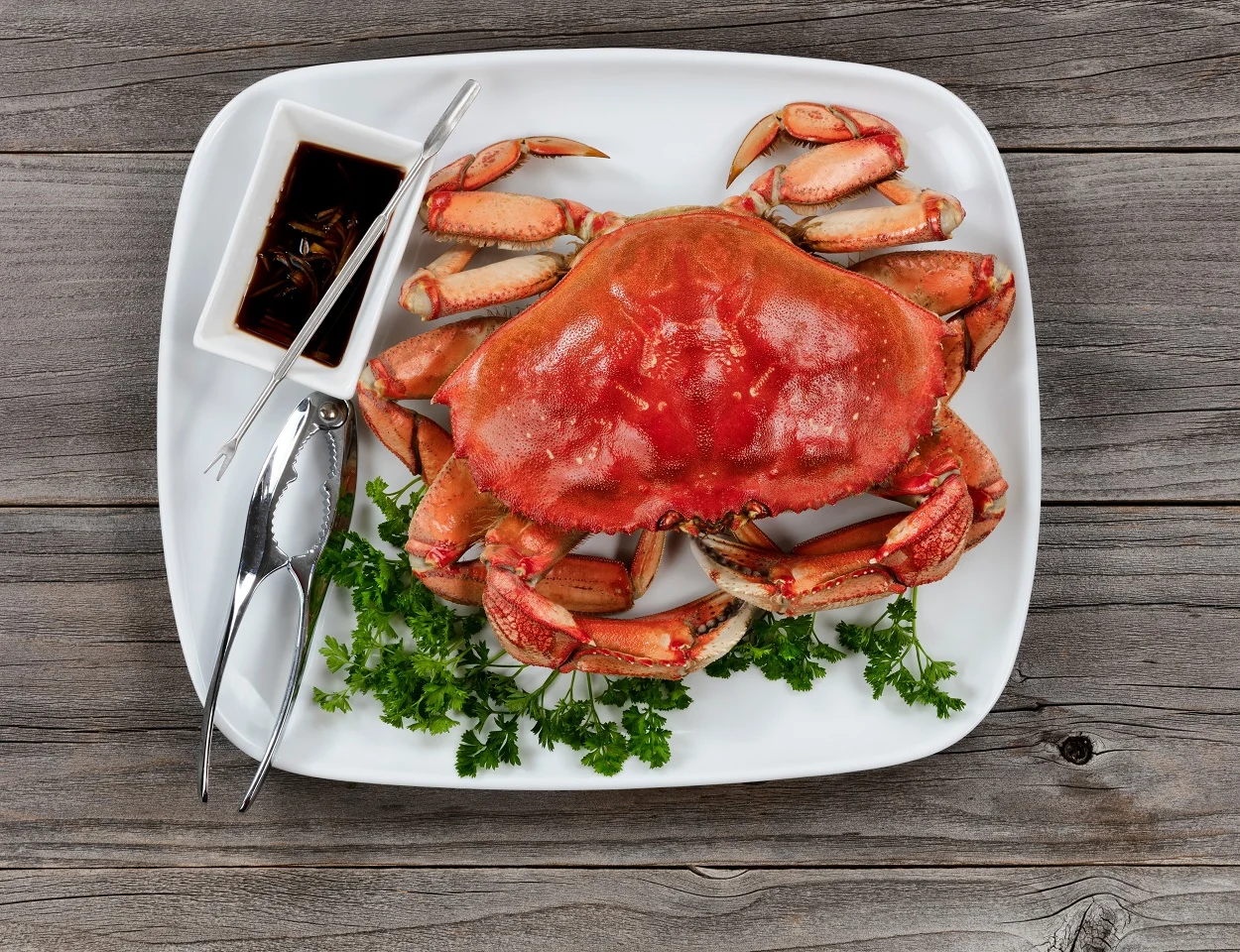
Step 6: Remove Gills
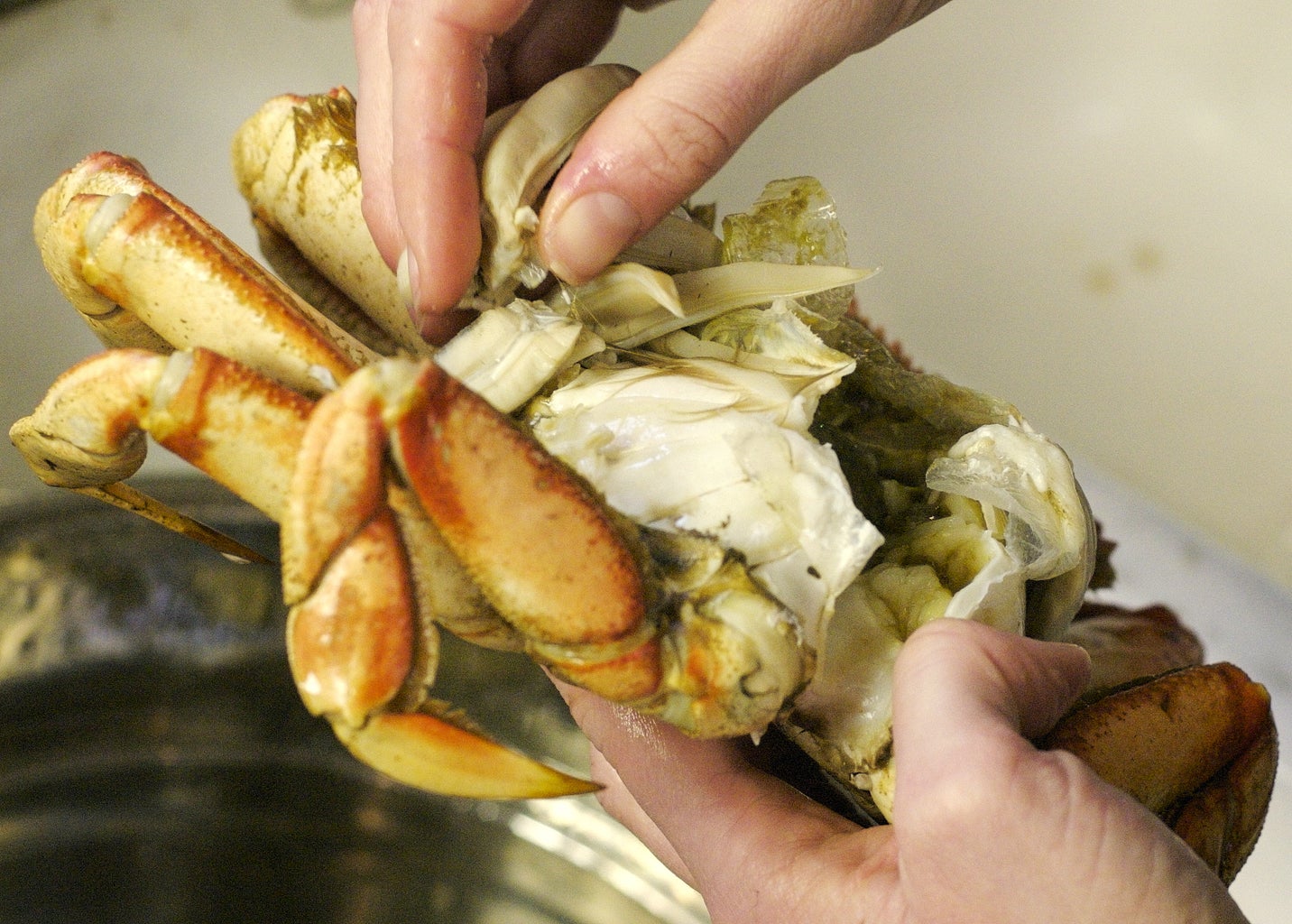
Step 1: Get a Fresh Crab
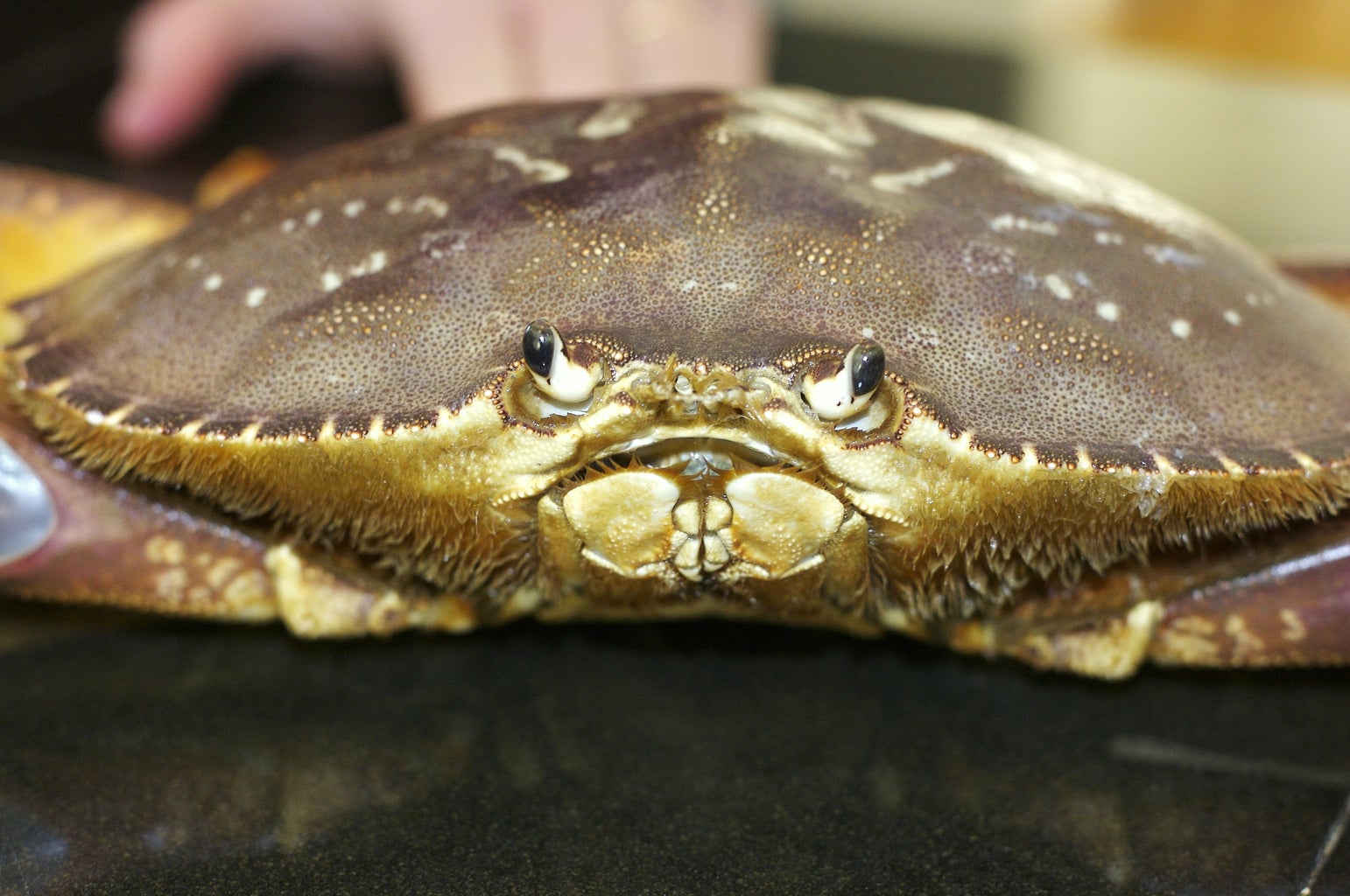
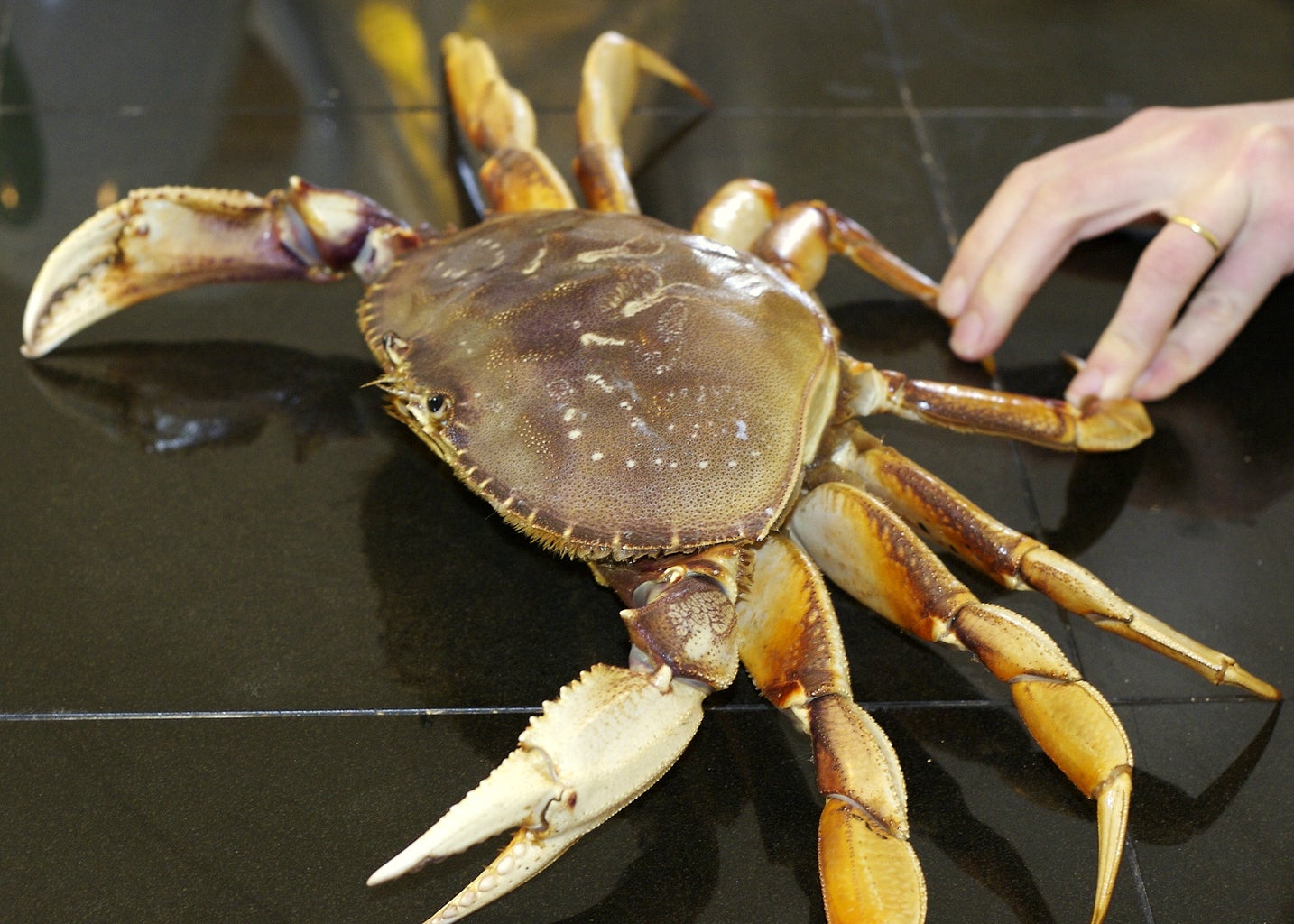

There are many options. 1) Go crabbing. Set up some crab traps and get your fishing license. This should be easy if you have a boat or know someone who does. If not, consider getting a free boat. 2) Buy a fresh crab. I got mine at the Oakland Grand Lake market, but yours might have a stand selling fresh crab. Seafood shops, yuppie grocers, and asian grocery stores may also carry fresh crab. 3) Buy a pre-cooked crab. It’s not the best, but it will work if you can’t find a live source or don’t want to deal with live pinchers. In any case proceed to step 4 to clean your crab. Note that a happy crab will be active and feisty when disturbed. Take care to grab the back of the shell when you pick him up with tongs or your hands. The crab can pinch you even though his claws are pretty far back under his body. Your upper fingers are safe. To stop the crab from moving, you can also grab a couple of back legs on each side. Just be careful not to break them off.
*youre only allowed to keep and eat the males
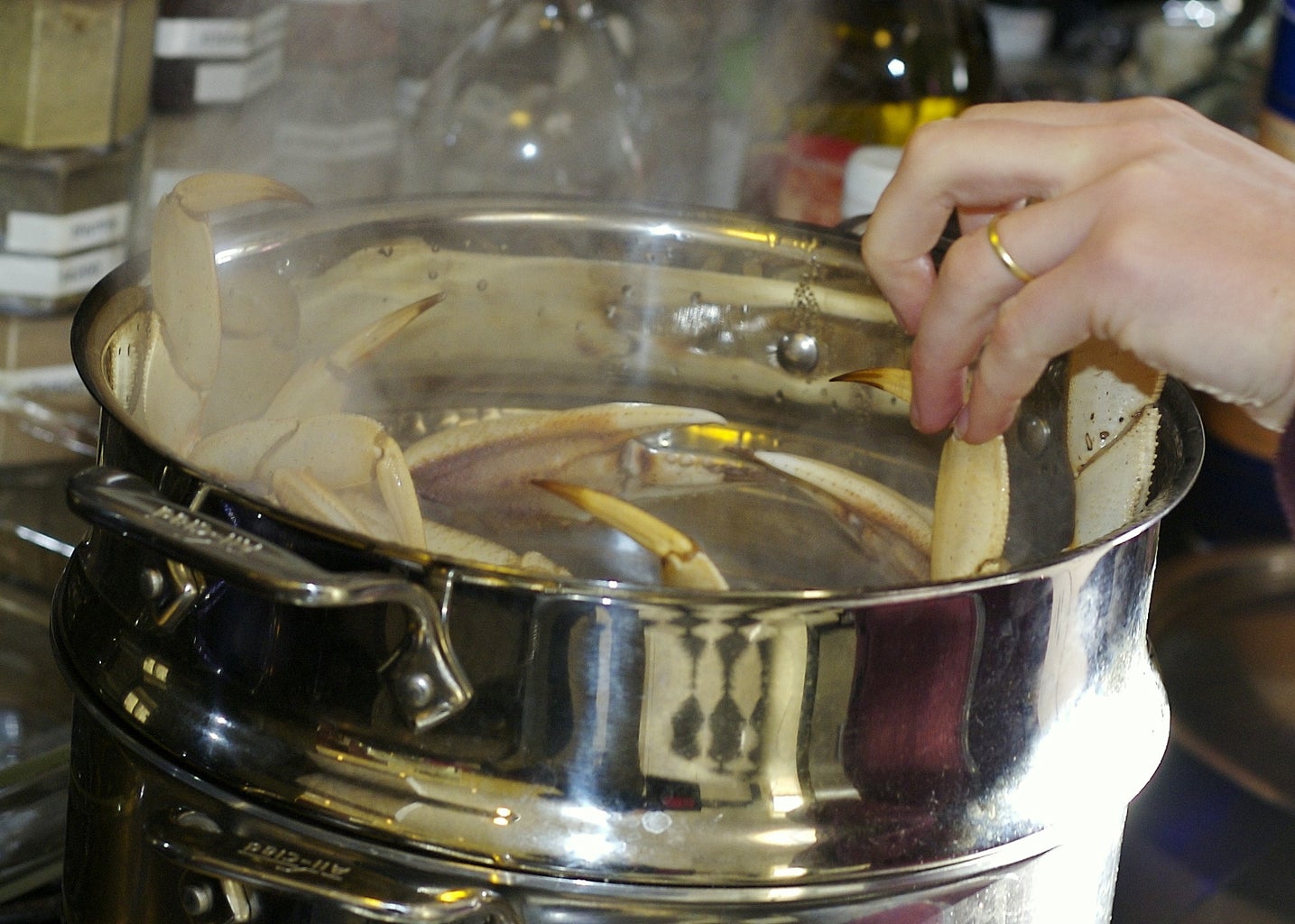

Steam or boil your crab at ~7-8 minutes/pound, lid on but cocked to allow a bit of venting. I steamed mine because I have a big steamer insert and steam lowers the amount of water that stays in the body. But boiling will work just fine, and more people have big pots than big steamers. Set your timer for when the water boils again if you’re adding a lot of crabs. Base your number of minutes on the average crab weight, not the sum total. Round times down whenever necessary; raw/undercooked crabs can always be cooked further, while overcooked rubbery crab is unsalvageable. Thankfully theres a decent margin for error in crab-cooking. If youre boiling, you can add some seasonings to your water. Sea water or salt should be used. A bay leaf, chunks of celery and carrot, peppercorns, and any other whole spices you have on hand should also be added. Pre-mixed crab boil seasonings are available, but not necessary. Notes from the comments: – Use the fact that crabs are cold-blooded to your advantage! Putting them in the fridge or freezer right before you use them will slow down their metabolism enough that they are easy to handle. – You can clean your Dungeness crabs before cooking. This keeps the mess out of the pot and allows for more crabs in the space. All you have to do is chill the crab as described above, then follow the steps 3–9 and cook it as described below. However, this approach does require vivisection, which freaks some people out even if the crabs arent moving. Take your pick. Also, if you cleaned and cut your crabs in half ahead of time, weigh them again (average weight of each half-crab) to find out how long to cook them.
—In many countries and states, you have to take your crabs home before you break them up. This way, any passing fisheries officer can check them to make sure they are the right size. If you break them up while you’re still on the boat, it could be seen as an attempt to sneak off with crabs that are too small.
